Holidays on the Frontier
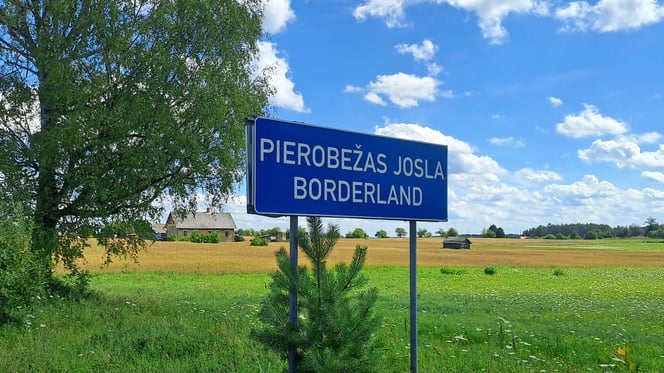
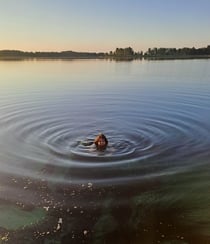
Due to recent global events, vacationing where NATO meets Russia might seem as relaxing as a stroll in a minefield. in fact, Latvia's eastern region, Latgale, is a haven of friendly locals, rich culture and marvellous blue lakes.
Having lived in Latvia for almost three decades, I've enjoyed Latgale's spirited music, steaming saunas and touching hospitality before. But I'd never travelled right along the border. So with my sidekick Lauma, we recently took our sturdy Opel Zafira on a four-day trek along the edge.
Land of smiles
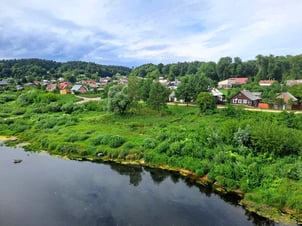
We left Riga in the 20-year-old marvel of German engineering on an August Thursday morning, and by mid afternoon we were in Krāslava, in the far south east.
It's a pretty place, with the Daugava River meandering poetically along a shore dotted with neat wooden cottages. But with Belarus just six kilometres away, and the new Cold War getting icier by the day, security is a concern even in this gentle spot.
The first local we met was a policeman checking the IDs of drivers entering the town. This was one easy going cop, grinning and joking about him deserving a holiday too. Papers, please - but don't let it spoil the friendship!
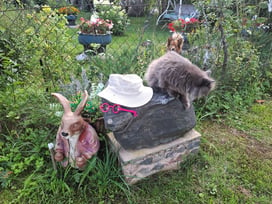
More fun followed. Latgalians seem to have an informal competition going for the whackiest garden decor. Gnomes, flamingos and storks (real and fake), bedecked with fairy lights, offer a cheesy grin from every other home.
It's not just tack, as the locals use them as props to spark conversations (this would NOT happen in Kurzeme).The pic here originated during an encounter in Krāslava. Only the cat, forced to pose for the umpteenth time, was miffed.
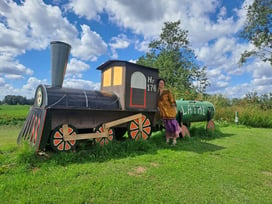
Residing in the skintest part of one of the EU's poorest countries, Latgalians probably have a lot to gripe about. Instead, they seem to approach life with a light step and genuine affection for their fellow humans.

Small wonder that the region boasts a Museum of Happiness. Located west of Krāslava in the village of Indra, it offers a journey through colour therapy, music and herbal aromas into what it takes to get a smile on your face. Resist the siren songs of booze, sex and gluttony and find deeper joy in community and creativity, is the subtly suggested recipe. Or at least get some exercise.
Illegal guests
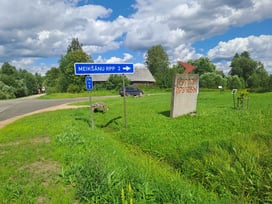
The museum is housed in a disused Lutheran church, built by the Ulmanis government in the1930s for border guards posted here from more westerly parts. It's another strand in a complex web of Catholic, Orthodox, Old Believer and good old pagan traditions that make Latgale a melting pot of faiths.
In recent years, there's been a more alarming rush of new blood. Since 2019, as relations have soured between the West and Belarus, Belarusian dictator Alexander Lukashenko has launched a proxy war against his Baltic and Polish neighbours. Prodded by Belarusian soldiers, waves of Middle Eastern refugees have swept to the borders, putting local residents and national security services on edge.
We wanted to go right up to the border to gaze upon the Mound of Friendship (Draudzības kurgāns), a Khrushchev-era monument to fraternity between Soviet republics. It's situated at the confluence of the Latvian, Russian and Belarussian frontiers. But a lone Latvian border guard and his car blocked the way at the turnoff. Sorry, no visiting the Soviet relic, as his colleagues have their hands full already without tourists getting in the way. And no photos of him, either, thanks.
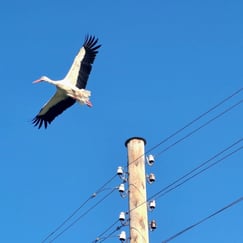
But he was much more pleasant and polite than you'd expect from a young chap with a gun and a uniform, dealing with dumb tourists amidst a crisis. For all its problems, Latvia is still a free and decent little country. The tone of communication would no doubt be different on the other side of the fence.
A word about storks, creatures with a healthy disrespect for borders of any sort. Latvia is rich in these grand birds, but we've never so many as in the east.
Migrating over 4,000 km to settle in the same nests, they epitomise the Latgalian spirit - open to the world, yet deeply proud of their home. They're everywhere, nesting on lampposts, strolling in parks, foraging for frogs in gardens. This points to the overall health of the local ecosystem, and it may explain why the local produce tastes so great.

This can be appreciated at Latgale's local markets. A shout out to the burly butcher with a sausage tent in the centre of Dagda - his speķis (bacon fat laced with garlic) was mouth melting good.
Spirit world
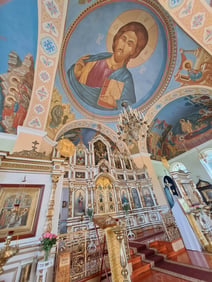
By the standards of eastern Latgale, Ludza is a big town, boasting the only pizzeria, post office and petrol station for miles.
Its castle ruins offer spectacular views over the abundant local waterways, while the grand Catholic church and the Orthodox cathedral with magnificent frescoes no doubt offer their flocks glimpses into eternity.

But the most intriguing place of worship is one you'd barely notice if you passed it on the street. Before World War Two, over half of Luza's population were Jews, and its famed rabbis earned it the nickname "the Jerusalem of Latvia."
But in 1938, a great fire destroyed most of the town and all its synagogues. Except for a humble timber one, in a quiet neighbourhood. It was unusually spared by the Nazis, then served as one of the few working synagogues in the USSR. Most of Ludza's Jews emigrated to Israel in the 80s and 90s, but today the building is a fascinating museum.
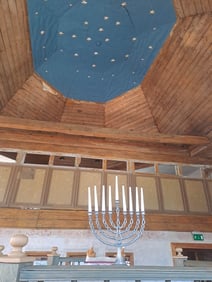
The museum guide, a passionate woman in her forties, said she's asked a lot if she is Jewish. No, she's Catholic, but she adds: "Everyone in Latgale has some Jewish blood."
Grandma's home of the future
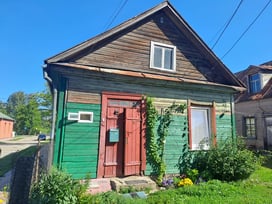
Latgale has an abundance of historic timber architecture, which has a more Slavic aspect than elsewhere. And while sadly, many of these gems are losing the battle against the elements, there are plenty kept in good nick by caring owners, too.
They are beautiful, made from local materials and if you look after them, you have a home that spans generations. It often seems like Latvia imports green policies from abroad to tick off abstract climate or sustainability goals. But from forest foraging to building, a lot of tried and tested answers are staring us in the face.
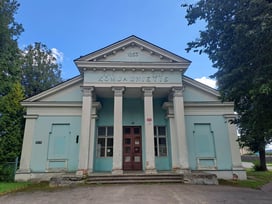
There are plenty of Soviet-era buildings, too. Some of which are eye catching in a good way.
Our favourite is the 1950s-vintage cinema in Dagda. The Saturday matinee must have been such fun after a week's toil.
Speaking your language

We got another taste of Latgale's rich ethnic stew while cooling off in the lake in Viļaka after a scorcher. Paddling near us were two teenage girls, who spoke flawless British English with each other (maybe with a Midlands twang?) Their father swam up and they switched to Russian. Then dad and a mate chatted away in the mellifluous Latgalian dialect. Maybe the family relocated to Birmingham and spends summers here with the grandparents?
There's a lot of live and let live in Latgale. When you inhabit the crossroads of Eastern Europe, it helps. The local Latvians, the latgalieši, immediately switch to standard Latvian when faced with a čiulis (a Latvian from points west). Or if needed, to Russian.
To Latvians from elsewhere, Latgale is kindly hillbilly country. But far from being hicks, its people are citizens of the world. Maybe to their detriment, as a lot of local Russian speakers can't string two words of Latvian together. Why bother learning a language if everyone automatically switches to yours?
Thanks to the war in Ukraine and Lukashenko's border antics, ethnic relations in Latgale is a sensitive topic. But I like to think the long traditions of tolerance in Latgale are stronger than any imported friction. As well as monitoring the situation, I think the Latvian government needs to focus on bringing investment and jobs to the region. The better off Latgale's people feel compared with the tyrannies to the east, the less susceptible they will be to any hijinks from over there.
In Viļaka, there's a lovely island in the middle of the lake, connected to the mainland by a wooden footbridge, It is home to the ruins of medieval Marienhausen Castle, whose turbulent fate may illustrate the longer arc of history in these parts.
For centuries, it was fought over, ad nauseum, by a stream of Germans, Russians, Poles and Swedes, until Peter the Great's artillery blasted it into oblivion during the Great Northern War. The thing is, in between killing each other, these feisty foes traded and married with each other and the locals, adding their genes to the Latgalian kaleidoscope.
Today, the few remains of the old fort have almost enveloped by nature. Latgale spreads its green blanket of love, and old enmities are forgotten.
Travel details
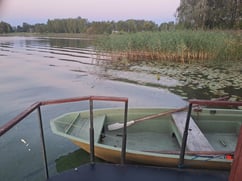
- Krāslava is about 3.5 hours (264 km) drive from Riga. The highways in Latgale have recently been de-potholed, and even the gravel roads are in good condition (possibly because, locals told us, there has been a big drop in cross-border truck traffic due to sanctions).
- We stayed in a mix of couchsurfing and airbnb places. Austris place, a floating house on a lake in Ludza accessed by rowboat, is a wet dream. Ezerkalns near Indra is a sweet, remote farm owned by elderly couple Irēna and Vjačeslavs next to, you guessed it, a beautiful lake.
- Safari Park Klajalkšņi up north has hundreds of deer and reindeer, and a welcoming owner who didn't mind us turning up for a look on Sunday morning a bit. You can whip yourself wild in the sauna overlooking the animal park.
Map of Latvia's eastern borderland
contact me
More Latvian Road Trips

Check out the ancient homeland of the Livonians on Latvia's wild north west coast. And journey through Latvia's bitter occupation at the former Zvārde Bombing Range.
